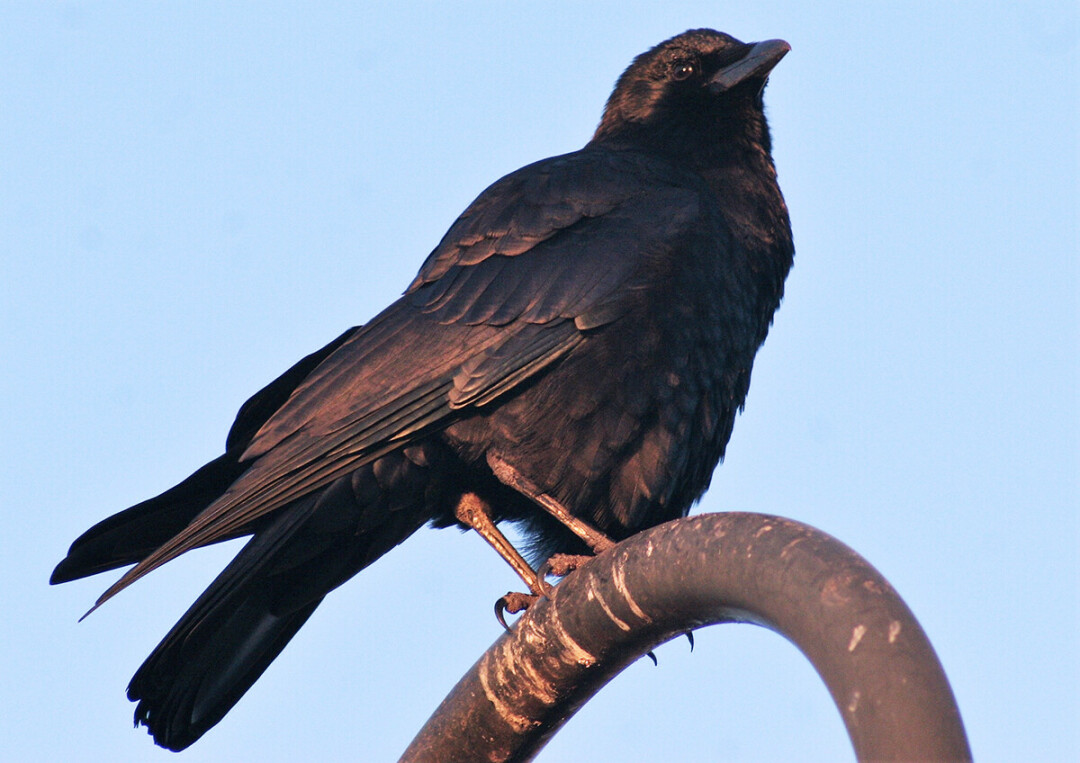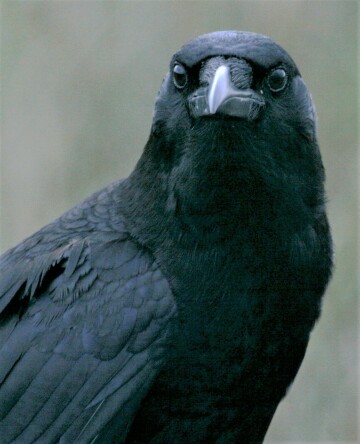COLUMN: Why the Crow Should Be Eau Claire’s Official City Bird
crows may be common (and noisy), but they’re also extremely smart and adaptable
Ron Davis, photos by Steve Betchkal |

“Sawdust City.” “City of Bridges.” “Music Capital of the North,” “Portland of the Midwest,” “Kubb Capital of North America,” and “Horseradish Capital of the World.” There are all kinds of nicknames, aliases, and sobriquets for Eau Claire, but since moving here five years ago, I’ve come to increasingly think of Eau Claire as “The Crow City.”
Is it just me? It seems that anywhere I go in Eau Claire there are crows, and sometimes flocks (or as some would call them, “murders”) of more than a hundred. I hear them at almost any time of day, particularly at dawn when I hear them calling back and forth, presumably rallying up for the day’s quest for food: Some spilled French fries in the McDonald’s parking lot? That squirrel pancaked on East Hamilton? The odd Cheeto plucked from the planks on the High Bridge or maybe a few squashed blueberries from the farmer’s market?
But don’t get me wrong, apart from the raucous reveille that wakes me many mornings, I’ve got nothing against crows. True, the American crow is not especially attractive and certainly not as glamorous as an eagle (though they are both fond of roadkill), and despite scarecrows, they’re admittedly a garden pest. Their “caw” can’t be described as a “song,” and thanks to those haunting scenes in Alfred Hitchcock’s “The Birds,” crows even have a sinister repute. But drawn to a little light research, I found that your basic crow actually has some pretty amazing qualities.

In a recent interview, ornithologist, ecologist, Emmy-winning video journalist and author of eight books on birds, Eau Claire’s own Steve Betchkal said, “If you are a fan of bird behavior, then you’re a fan of crows.” Crows are one of only four species (including humans) that can fashion and use tools. For example, crows have been observed dipping a cup into water to moisten a piece of bread and fashioning splinters to spear prey in holes. It’s also been documented that crows drop nuts in roadways to be cracked open by passing cars and may even understand traffic signals! Crows have the largest brain to body ratio of any bird – even bigger than ours – and the lowly scavenger has sometimes been called “the chimpanzee of the bird world” due to its talent for problem solving and memory. Research indicates they can count as high as 16!
“One of the reasons that crows are so successful is because they are so adaptive,” said Steve. “They are omnivorous, so just about anything that has caloric value is fit for consumption. They are also not picky about habitat. They do require trees for nesting or roosting, but they’re just fine if those trees are next to human habitation. Additionally, crows aren’t migratory, so they don’t face the kind of stressors that long-distance migrants do.”
Experts agree crows are also very social and “family -oriented.” They mostly mate for life (their average lifespan is 20 years), and they often help raise fledglings from other crows’ broods. Crows have been said to attend “funerals” for fallen comrades, but it’s more likely the birds gather to investigate the threat, and if a predator, such as an owl, is found, crows will call to others and join up to “mob” the enemy, seeking to drive it away. Though crows can mimic human speech, they have their own language of more than a hundred different calls, even different regional dialects.
According to Steve, crows can even tell us something about ourselves: “Every bird is a success story – an example of a species that has been shaped over millions of years. And birds are indicators of environmental health. If the birds aren’t doing well, that’s a good indication that we’re doing something to hurt their populations – and the data bear this out. Species that, unlike crows, are more sensitive to habitat disruption, free-roaming cats, migratory stressors, and environmental toxins are not doing well. Perhaps we should take a closer look at human behaviors?”
After living in the sticks for 40 years, my wife and I moved to Eau Claire, and besides the crows, I delight in seeing any incursions of wildlife into our new neighborhood, whether it’s the deer that sneak into our backyard at night or the squirrels that terrorize our bird feeders. “Eau Claire is a Bird City,” said Steve, “and that designation is beneficial for the community. However, it’s not a one-way deal: We owe birds something in return – a commitment to more conscientious and sustainable lifestyles which are bird-friendly. We must build structures without shiny metal and glass so that birds are not lured into fatal collisions. We must keep cats indoors if not leashed – without exception. And we must address the thoughtless use of environmental toxins like noenicitinoids and glysophates. There’s data out there that says that half the humans on Earth are born with a genetic propensity to ‘love animals.’ What does that mean for the other 50%? And how does that translate into everyday practice of compassion and empathy?”
We could do worse than naming crows as our official city bird in Eau Claire, but shouldn’t we embrace every touch of wildness in any city?
Ron Davis is the author of Shiny Side Up and Rubber Side Down, two books about the improbable inclination to travel on two wheels, now available at the Local Store.





















